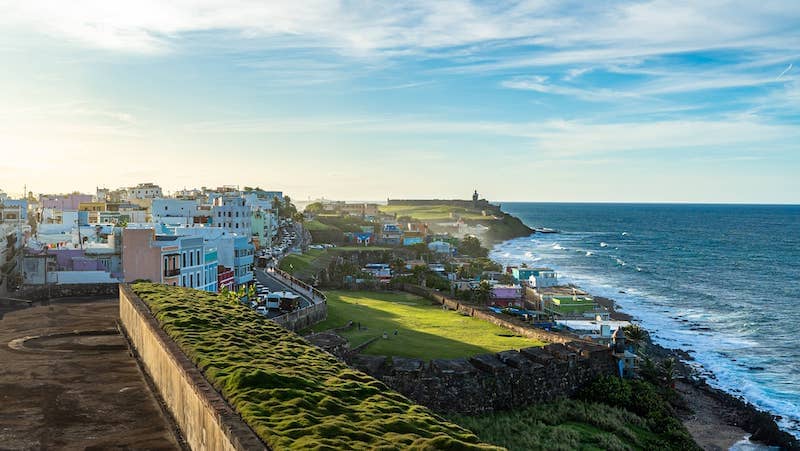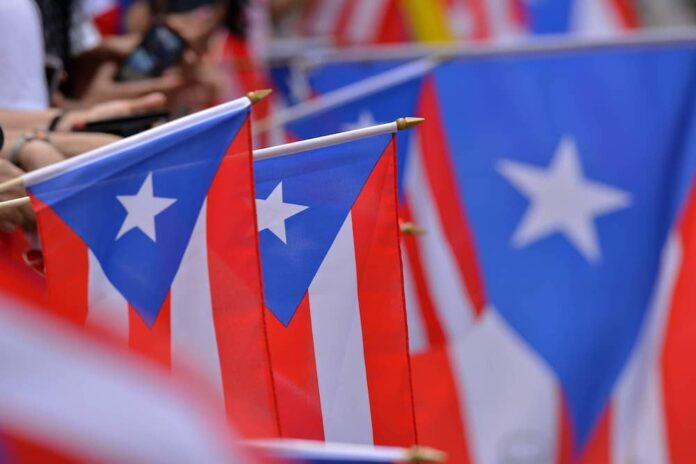Chances are, you know someone Puerto Rican, love someone Puerto Rican or are someone Puerto Rican – or all three! In any case, show your support for this colorful, vibrant Latino culture on June 12th, 2022, for the 65th-anniversary celebration and National Puerto Rican Day Parade on Fifth Avenue.
New York’s National Puerto Rican Day Parade Details
Join us on this beautiful day of fierce Puerto Rican pride and experience this rich culture for yourself. If you want to join the parade with a float or performance or are a vendor or sponsor wanting to participate in the Festival or the Parade, get your applications in by May 27th through the appropriate category on their website here.
This year’s event will be dedicated to the municipality of Cidra, known as the Pueblo de la Eterna Primavera, or the Town of Eternal Spring, home to approximately 40K Cidreños, as well as the Greater Philadelphia area, where approximately 250,000 Puerto Ricans reside. This year the NPRD Parade will be televised on WABC – TV channel 7 starting at 12noon EDT.
The Parade will start in Manhattan on June 12th at 11 am on Fifth Avenue and will run from 43rd Street to 79th Street. It will also be streamed live on multiple apps listed on their website at the link above.
The 152nd Street Cultural Festival
The entire celebration will kick off with the 152nd Street Cultural Festival, on May 28th, 2022, in the Bronx, on 152nd Street between Jackson and Tinton Avenues. The family event will showcase artisans, cultural activities, food, music, and a variety of entertainment for adults and children. This is a wonderful opportunity to get outdoors and enjoy the different and diverse cultural experiences NYC has to offer!
Scholarship Program and More
The NPRDP is an iconic institution more than six decades strong, with a mission of creating awareness and appreciation for Puerto Rican culture and history, as well as recognizing their contributions to the global society. This wonderful organization does just that, by producing and hosting multiple events created to celebrate and advance art, culture, and education in the Puerto Rican community everywhere. These annual events include the Education Leadership Awards, Rising Stars Challenge, 152nd Street Cultural Festival, Annual Parade Mass at Saint Patrick’s Cathedral, and the Gala Fundraiser Banquet. In the midst of all of this, they have produced a scholarship program that started in 2013. The annual program awards 100 exceptional high school and college students of Puerto Rican descent money towards their college education. In 2018, they gave out $200K.
This organization depends heavily on its tax-deductible donations and speaking of which, this year, the annual gala fundraiser will take place at Central Park Zoo on Saturday, June 11th, 2022. The event proceeds will benefit the NPRDP scholarship fund, and you can purchase tickets here. The NPRDP is also coordinating with one of the first independent digital marketplaces called Mowsse, specializing in crypto-collectibles and NFTs, as its first philanthropic investment. So come out to one or all of these special events, and help show support to our much beloved Puerto Rican community!
The National Puerto Rican Day Parade History

The National Puerto Rican Day Parade typically attracts many noteworthy Puerto Ricans, politicians, and celebrities, and runs along Fifth Avenue between 44th Street and 88th Street, but the heart of the parade is at 116th Street between Lexington Avenue and Second Avenue.
The first NPRD Parade took place on April 13th, 1958, in Manhattan, replacing the Hispanic Day Parade. In 1995 the event was incorporated into National status and now hosts over 7 major events throughout the city. There is usually a street fair the day before the parade that is not sponsored by the NPRDP, and multiple other events over the weekend, as well. Though some other major cities also have parades, the NYC parade is the largest in the country and has been featured in pop culture quite often.
The celebration is in honor of the 3.5 million inhabitants of Puerto Rico and over 5 million Puerto Rican people who reside in the United States!
About Puerto Rico
Puerto Rico is both an island and a U.S. Territory. The indigenous people were the Taino Indians, a culture founded by the Arawak Indians. The Taino called their island home Boriquén, and this is why many native-born Puerto Ricans today refer to themselves as ‘Boricuas.’ In 1493, Christopher Columbus landed on Boriquén and promptly renamed it after John the Baptist, San Juan Bautista, and claimed it for Spain. It was renamed shortly afterward Puerto Rico or ‘rich port,’ but the capital was named San Juan. Between the Spanish invasion and then the African slaves who were brought there for labor purposes, the Puerto Ricans today are typically a mix of the Indian-Spanish-African ethnicities that settled there.
Puerto Rico is only about 1,000 miles off the coast of Florida and, located in the Caribbean Sea, it is considered one of the Caribbean Islands. The population is approximately 3.2 million people today who are considered U.S. citizens and can travel back and forth between there and here freely without a passport. Puerto Rico has fought many battles and skirmishes over its independence, even since Spain ceded the island to the United States after its defeat in the Spanish-American War back in 1899. As a matter of fact, to say they have fought many battles for their independence cannot be overstated.
There’s too much history to include within one article, but let’s skim just a few things related to their political unrest and fight for independence.
The Fight for Independence and Puerto Rico Today
There have been countless revolts, battles, movements, and incidents throughout history that relate to the people of Puerto Rico fighting for their independence. From the time Christopher Columbus and the Spaniards invaded the mostly peaceful island of indigenous Indian people and took over, forcing them into labor and exposing them to deadly diseases, they tried to revolt but were defeated. The Spaniards brought an influx of African slaves to the island, as well, and didn’t abolish slavery until 1873. Military groups from different countries wanted possession of the land for strategic purposes. And things weren’t really much better after the U.S. took over, not to mention the island’s inherent vulnerability to natural disasters like earthquakes, hurricanes, and tornadoes, of which they have experienced plenty.
In 1914, the House voted unanimously for independence from the United States, but Congress found their request ‘unconstitutional.’
In 1943, the Puerto Rican House of Representatives again requested their independence from the United States and introduced a bill to do so. Once again, it was defeated.
In 1952, Congress approved a local constitution that allowed the citizens of Puerto Rico to vote locally for a governor. Though U.S. citizens can move freely between Puerto Rico and the rest of the United States, Puerto Rico is an unincorporated territory, which means they’re disenfranchised at the national level and cannot vote in federal elections. Laws enacted at a federal level do apply to them. However, they do not have voting rights in Congress and have a Resident Commissioner in the House of Representatives.
Recently in the 2020 election, 52.5% of Puerto Ricans voted to make Puerto Rico a state. In the past, the original choices were a commonwealth, a statehood or independence, in which a commonwealth was chosen.
This month, lawmakers have drafted a historic bill to allow the residents to vote on the island’s territorial status. The bill is called the Puerto Rico Status Act and, if passed in both the House and Senate, would give residents the ability to choose between statehood, sovereignty in association with the United States, or independence. Any choice will allow citizens to maintain U.S. citizenship for one generation, but if the statehood option is chosen, it will begin passage to being the 51st state.
A vote will take place on November 5, 2023. If no option earns a majority vote, there would be a runoff election in March 2024.
A step towards statehood or full independence is an exciting prospect for many Puerto Ricans, it only makes sense to join the festivities this June!
Rochelle Harris is a passionate writer originally from Phoenix, AZ. who credits her success to integrity and determination. She has a great sense of humor, loves music and her family, and writes fiction and poetry in her spare time. She is excited about the New York experience and lifestyle! Follow Rochelle on Twitter at @LinguisticAnRky or get in touch at [email protected]



